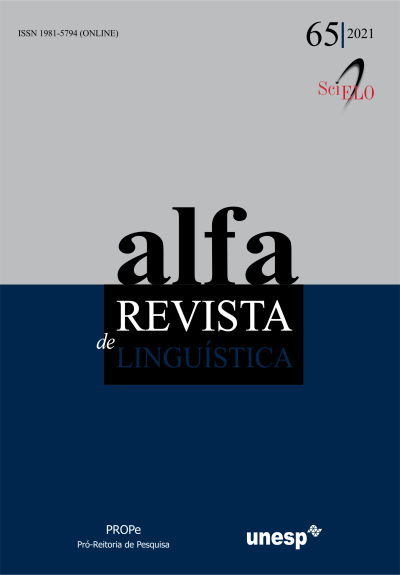Gaps among complex onsets in Portuguese
a diachronic view and some considerations related to perception
DOI:
https://doi.org/10.1590/1981-5794-e13210Keywords:
complex onsets, Portuguese, phonology, diachrony, perceptionAbstract
Although Portuguese admits syllables with complex onsets, there are several constraints on the kinds of actually occurring complex onsets. Firstly, the only kind of possible complex onset is the one formed by a non-sibilant obstruent followed by a liquid. Even within this smaller group of complex onsets there are still gaps. The onset /dl/ does not occur, whereas the onset /tl/ is hardly ever found, and only in the middle of words. There are also no /vl/ and /vɾ/ onsets at the beginning of native words in the standard language, except in the onomatopoea vrum. The present article examines these gaps with the purpose of identifying why they exist. The conclusion reached is that the gaps in the onsets including the consonant /v/ as their first member are explained as a result of the conditions for the development of that consonant from Latin to Portuguese. The first two complex onsets, /tl/ and /dl/, on the other hand, are disfavored due to perceptual difficulties.
Downloads
Downloads
Published
How to Cite
Issue
Section
License
Manuscripts accepted for publication and published are property of Alfa: Revista de Linguística. It is forbidden the full or partial submission of the manuscript to any other journal. Authors are solely responsible for the article's content. Translation into another language without written permission from the Editor advised by the Editorial Board is prohibited.

